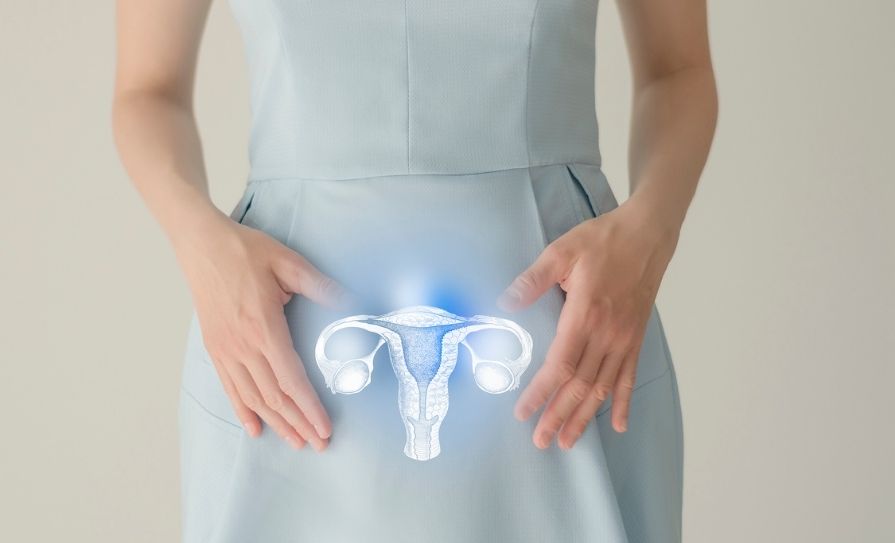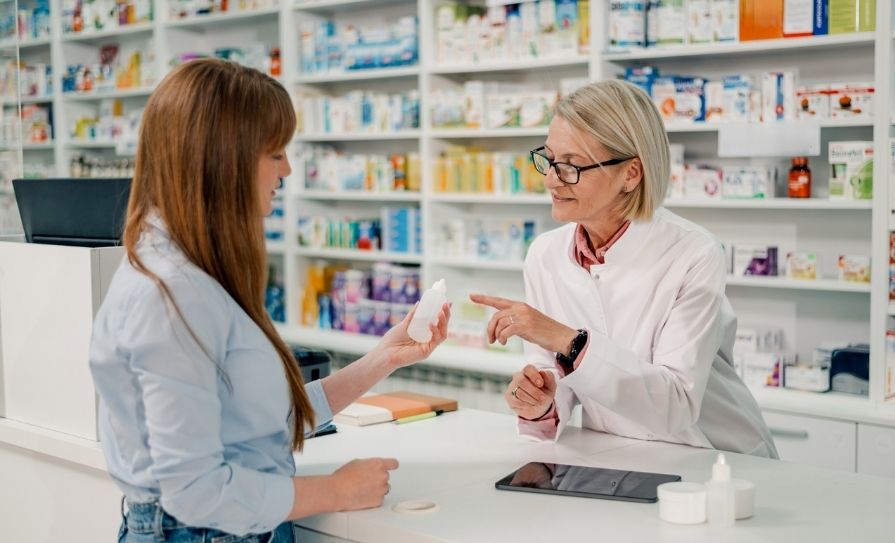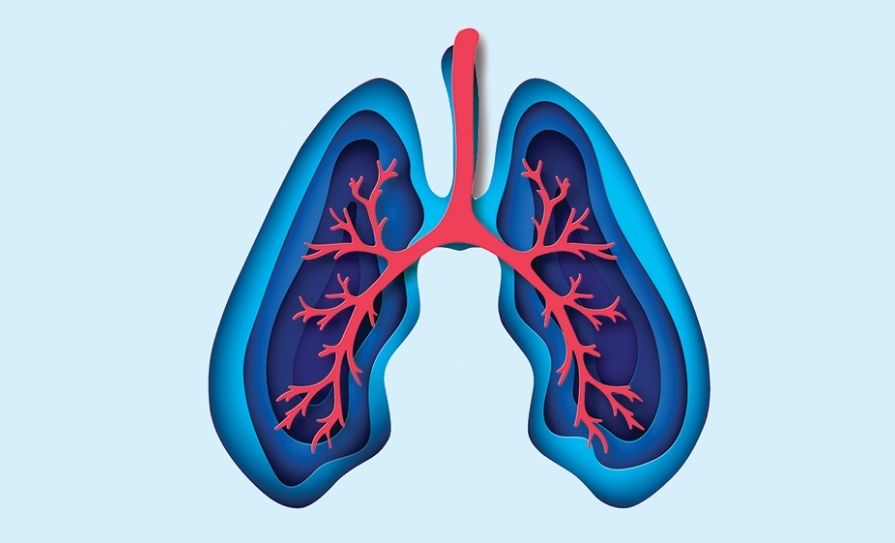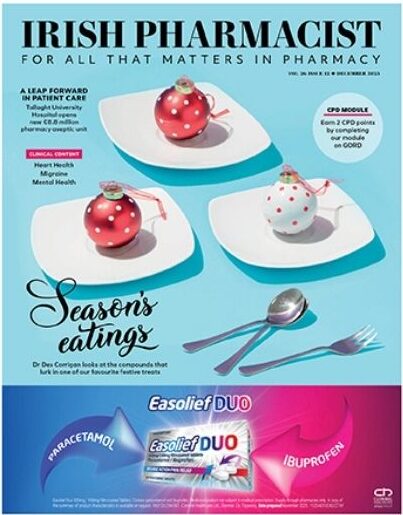Women’s health has many strands that often intersect. On completion of this module, it is expected the reader will have an enhanced understanding of menopausal health, UTIs, and vaginal health, as well as the current NICE guidelines
AUTHOR: Eamonn Brady MPSI
Despite progress in female- specific care, conditions such as menopause, urinary tract infections (UTIs), and vaginal infections are still not afforded the attention they deserve within general and specialised medical practice. This article is split into four parts:
- Menopause.
- Urinary tract infections (UTIs).
- Vaginal infections.
- Other considerations.
These three areas of health, while clinically distinct, intersect in important ways. They all disproportionately affect women, have social and psychological ramifications, and suffer from a degree
of societal taboo. Furthermore, each condition varies widely in its presentation and treatment needs depending on age, reproductive status, sexual health, lifestyle, and access to care.
Reason for using UK NICE (National Institute of Clinical Excellence) guidance as a major referencing tool in this article: In this article, I provide an evidence-based overview of menopause, UTIs and vaginal infections. While many medical journal articles and studies from Ireland, the UK, and worldwide are used as references and research for this article, NICE guidelines form a major component of the recommendations in this article.
There are many excellent internationally recognised guidelines on the subjects in this article that are in no way inferior in their clinical research and guidance perspective compared to NICE guidance.
A strong reason to use UK NICE guidance as a major reference tool for this article is that NICE guidelines are internationally respected, evidence-based, and widely regarded as gold standard clinical references. While Ireland has its own healthcare structures, Ireland often lacks equivalent comprehensive, regularly updated national guidelines across all therapeutic areas.
Therefore, Irish pharmacists and clinicians frequently rely on NICE for best practice benchmarks, especially in areas where local guidance is limited, outdated, or non-specific. Using NICE as a foundation ensures the article is rooted in rigorous, peer-reviewed recommendations that reflect current international standards of care.
Part 1: Menopause
The menopausal transition: Clinical, emotional, and cultural dimensions
Menopause, while a biological inevitability for most women, is often experienced
as a time of uncertainty, physical disruption, and even social withdrawal. In the UK and Ireland, the average age of menopause is approximately 51, though the perimenopausal period can begin much earlier, often in a woman’s early 40s or even late 30s.
Symptoms extend far beyond the stereotypical hot flushes. Mood swings, depression, anxiety, sleep disturbances, poor concentration, memory issues, joint pain, and genitourinary syndrome of menopause (GSM) are common. According to NICE, about 80 per cent of women experience some form of symptoms during the menopausal transition, and about 25 per cent report severe symptoms.
NICE guidelines recommend clinical diagnosis in women over 45 without
the need for hormonal testing, except in suspected Primary Ovarian Insufficiency (POI), which is loss of normal ovarian function before age 40, leading to infertility and low oestrogen levels.
Unfortunately, many women in both the UK and Ireland still struggle to get a timely diagnosis or appropriate support, often being told their symptoms are simply part of ‘getting older’. This reflects broader systemic gaps in training, awareness, and access to women-focused healthcare.
HRT: Safety, controversy, and personalisation of care Hormone replacement therapy (HRT) has undergone a renaissance in recent years, due to re-analysis of older studies and growing recognition of its benefits. This is reflected, for example, in the decision by the Department of Health to roll-out free HRT products from June 2025. NICE and the British Menopause Society now advise that HRT is safe and effective for most women under 60, especially those within 10 years of their last period.
Types of HRT include:
- Oral and transdermal oestrogens (patches, gels, sprays);
- Micronised progesterone or synthetic progesterone;
- Intrauterine systems (ie, Mirena coil);
- Vaginal tablets or creams for local symptoms.
Menopause and mental health: A forgotten connection
One of the most underexplored aspects of menopause is its effect on mental health. Oestrogen is known to influence serotonin, dopamine, and other neurotransmitters, and its decline can precipitate mood disorders in susceptible individuals.
NICE highlights that depression or anxiety occurring in mid-life may be hormonally driven and that HRT,
rather than antidepressants, should be considered as a first-line treatment. Sadly, many Irish women report being misdiagnosed or prescribed SSRIs without a discussion about hormonal influences.
A multidisciplinary approach is essential. Cognitive behavioural therapy (CBT) has proven benefits for menopausal symptoms and is recommended by NICE. Furthermore, social support, peer groups, and access to informed professionals can drastically improve mental health outcomes during this life phase.
New free HSE HRT scheme (effective June 2025)
As of June 2025, the Health Service Executive (HSE) has introduced a new scheme providing free HRT to eligible women aged 45-to-65 in Ireland. This initiative aims to improve access, reduce out-of-pocket costs, and encourage uptake of safe, evidence-based hormone therapy.
Pharmacists will play a key role in implementing the scheme, providing education, reviewing eligibility, and supporting adherence. They will also act as vital intermediaries going forward.
NICE summary
Menopause (NICE NG23) – menopause, diagnosis, and management):
- Diagnose based on symptoms in women over 45 — do not routinely use blood hormone tests.
- Offer information on the natural history of menopause and common symptoms.
- Discuss treatment options, including HRT, lifestyle changes, and alternative therapies.
- Offer HRT as first-line for vasomotor and urogenital symptoms, unless contraindicated.
- Use local vaginal oestrogen for persistent genitourinary symptoms.
- Consider SSRIs, SNRIs, clonidine, or gabapentin only if HRT is not suitable.
- Promote shared decision-making and tailor treatment to each woman’s circumstances.
Part 2: Urinary tract infections (UTIs)
UTIs: A public health burden
Urinary tract infections are among the most common bacterial infections in women, affecting over half of all women at least once in their lives. The cost to public health systems is considerable, given the volume of GP visits, antibiotic prescriptions, and lost work days.
NICE recommends a primarily symptom-based approach for diagnosis in non-pregnant women.
In contrast, pregnant women, men, children, and those with recurrent or catheter-associated infections require further testing and referral.
Common first-line antibiotics include nitrofurantoin, trimethoprim, and cefalexin, although choices may vary based on pregnancy status and renal function. NICE advises against treating asymptomatic bacteriuria unless the patient is pregnant or undergoing urological procedures.
In Ireland, UTI treatment protocols are generally aligned with NICE, although variation exists in rural versus urban practices, particularly around access to dipstick testing and culture facilities.
More specific information about the different types of HRT products
(Brands mentioned are examples only and are not all products)
Oestrogen-only oral tablets
These oral formulations are used in menopausal hormone therapy for the treatment of vasomotor symptoms, urogenital atrophy, and the prevention of osteoporosis. They are suitable only for women who have had a hysterectomy or must be combined with a progestogen in women with an intact
uterus to protect the endometrium. Common side-effects include nausea, headache, breast tenderness, fluid retention, and mood swings.
| BRAND NAME | ACTIVE INGREDIENT | STRENGTH(S) | FORMULATION NOTES |
| Fematab | Estradiol | 2mg | Bioidentical estradiol |
| Estrofem | Estradiol | 2mg | Bioidentical, well- absorbed |
| Premarin | Conjugated oestrogens | 0.625mg 1.25mg | Equine-derived, non-bioidentical |
Combined Oestrogen- Progestogen oral tablets
Suitable for women with an intact uterus to prevent endometrial hyperplasia. Common side-effects include breakthrough bleeding, weight changes, breast pain, depression, and bloating.
| BRAND NAME | ACTIVE INGREDIENTS | STRENGTH(S) | REGIMEN TYPE |
| Kliovance | Estradiol 1mg/ Norethisterone 0.5mg | 1mg/0.5mg | Continuous combined |
| Kliofem | Estradiol 2mg/ Norethisterone 1mg | 2mg/1mg | Continuous combined |
| Trisequens | Estradiol/ Norethisterone | Varies | Sequential |
Oestrogen-only transdermal patches
Suitable for women who have had a hysterectomy. These avoid hepatic metabolism and lower risk of venous thromboembolism (VTE). Common side- effects include skin irritation at the application
| BRAND NAME | ACTIVE INGREDIENTS | STRENGTH(S) | APPLICATION FREQUENCY |
| BRAND NAME | ACTIVE INGREDIENTS | STRENGTH(S) | STRENGTH(S) APPLICATION FREQUENCY |
Estradot | Estradiol | 25–100?g | Twice weekly |
Evorel | Estradiol | 25–100?g | Twice weekly |
Combined Oestrogen- progestogen transdermal patches
Suitable for women with an intact uterus. Common side-effects include mood swings, skin irritation, and breast tenderness.
| BRAND NAME | ACTIVE INGREDIENTS | STRENGTH(S) | APPLICATION FREQUENCY |
| Evorel Sequi | Estradiol/ Norethisterone | Varies | Sequential |
| Evorel Conti | Estradiol/ Norethisterone | Varies | Continuous combined |
Transdermal gels and sprays
Offer flexible dosing and are suitable when precise titration is needed or if patches cause irritation. Common side- effects include skin irritation, breast tenderness, mood changes, and bloating.
| BRAND NAME | FORM | ACTIVE INGREDIENT | STRENGTH(S) | APPLICATION NOTES |
| Oestrogel | Gel | Estradiol | 0.75mg/1.25g | Applied daily to skin |
| Lenzetto | Spray | Estradiol | 1.53mg/spray | Applied daily to skin |
Vaginal oestrogen preparations
Used for local symptoms such as vaginal dryness. Common side-effects include vaginal irritation, discharge, spotting, and itching.
BRAND NAME | FORM | ACTIVE INGREDIENT | STRENGTH(S) | APPLICATION NOTES |
Vagifem | Pessary | Estradiol | 10 ?g | Inserted vaginally |
| Ovestin | Cream | Estriol | 0.1 per cent | Applied vaginally |
Tibolone
Its combined oestrogenic, progestogenic, and androgenic effects make it suitable for women with or without a uterus, without the need for separate progestogen. Tibolone is rarely used (<2 per cent of HRT users) in Ireland and Europe due to limited data on long-term safety and increased breast cancer risk – its appeal lies in single-tablet dosing, multi-tissue action, and bone/vasomotor benefits.
Common side-effects include weight
gain, acne, and abdominal pain.
| BRAND NAME | ACTIVE INGREDIENTS | STRENGTH(S) | NOTES |
| Livial | Tibolone | 2.5mg | Synthetic steroid with oestrogenic, progestogenic, and androgenic activity |
Progestogen-only preparations
Used with oestrogen in women with an intact uterus to protect the endometrium. Common side-effects include mood changes, bloating, breast tenderness, drowsiness, and breakthrough bleeding.
| BRAND NAME | ACTIVE INGREDIENT | STRENGTH(S) | FORM | NOTES |
| Utrogestan | Micronised progesterone | 100mg | Capsule | Oral or vaginal use |
| Provera | Medroxyprogesterone acetate | 2.5mg, 5mg, 10mg | Tablet | Oral use |
Intrauterine systems for HRT
Intrauterine systems (IUS) such as the Mirena coil provide local delivery of progestogen
and are used in combination with systemic oestrogen in HRT for endometrial protection. They are especially beneficial for women who also require contraception. Common side-effects include irregular bleeding, pelvic pain, ovarian cysts, mood changes, and breast tenderness.
| BRAND NAME | ACTIVE INGREDIENT | STRENGTH(S) | DURATION OF USE | NOTES |
| Mirena | Levonorgestrel | 52mg | Up to five years | Provides endometrial protection during HRT; also, contraceptive |
Managing recurrent UTIs: Lifestyle, prophylaxis, and patient empowerment Recurring UTIs presents a diagnostic and treatment challenge. Recurrent cases may be related to poor fluid intake, diabetes, sexual activity, or hormonal changes post-menopause. For these patients, treatment must extend beyond short-course antibiotics.
NICE recommends behavioural strategies (hydration, hygiene, timed voiding), vaginal oestrogen for postmenopausal women, and delayed or self-start antibiotics for well- informed patients. Cranberry supplements,
D-mannose, and probiotics have shown mixed results but may be helpful for some.
Utipro Plus AF
I’ll explain below why I specifically choose this over-the-counter (OTC) product for UTIs and the success that I have had in my practice in reducing antibiotic use for UTIs.
Utipro Plus AF is a plant-based Class IIa medical device for uncomplicated UTIs. It combines xyloglucan-gelose (forming an intestinal barrier) with hibiscus and propolis (to mildly acidify urine). Clinical trials show approximately 90 per cent of users avoided antibiotics during cystitis episodes. It is available OTC in Irish pharmacies but is not covered by General Medical Services (GMS) or the Drug Payment Scheme (DPS).
Dosage
- For acute UTI: Two capsules daily for five days; for prevention: One capsule daily for 15 days per month.
- Suitable for long-term use (months).
The only reason I mention this brand is that one of my pharmacies specialises in supplying nursing homes, and two nursing homes have GPs who prescribe this regularly for their patients with
previous UTI history and the results have been amazing. There has been a reduction of well over 50 per cent in antibiotic usage for female patients with UTIs.
These results mean that antibiotics are not needed as regularly or at all for UTI acute infection. While it is a relatively small sample size, the benefits over a three-year period to female patients in these two 60- bed nursing homes has been substantial.
If a patient is aiming for the most reliable OTC natural option for UTI prevention and early symptom control, Utipro Plus AF appears notably more effective than D-mannose based on the available evidence.
NICE summary
UTIs (NICE NG109 – UTI: Antimicrobial prescribing)
- Base treatment in non-pregnant women on symptoms and avoid unnecessary urine tests.
- In pregnancy or complicated cases, send midstream urine samples for culture.
- First-line treatments are nitrofurantoin (unless contraindicated), trimethoprim
(if low resistance), and cefalexin. - Do not treat asymptomatic bacteriuria except in pregnancy or before urological procedures.
- Educate patients on prevention: Hydration, wiping front-to-back, and urinating after intercourse. In recurrent UTI strategy, consider prophylactic antibiotics, vaginal oestrogen in postmenopausal women, and behavioural interventions.
Part 3: Vaginal infections
Vaginal infections: Breaking the silence
Despite affecting millions of women, vaginal infections are still surrounded by stigma. NICE guidelines aim to destigmatise and standardise care for bacterial vaginosis (BV), candidiasis, and trichomoniasis.
Accurate diagnosis depends on a thorough history and, when needed, examination or testing. Important considerations include:
- Type and odour of discharge;
- Itching, soreness, or pain;
- Timing is related to menstruation or antibiotics;
- Partner symptoms in sexually transmitted infection (STI) cases.
Chronic or recurrent infections should prompt further investigation. Hormonal imbalance, diabetes, or immune deficiency may be at play. Partner treatment is essential for STI-related cases.
More about the three most common forms of vaginal infections
- Bacterial vaginosis.
- Candidiasis (thrush).
- Trichomoniasis (an STI).
Bacterial vaginosis
Overview and causes
Bacterial vaginosis (BV) is the most common cause of abnormal vaginal discharge in women of reproductive age. It results from an imbalance in the normal vaginal flora.
In a healthy vagina, Lactobacillus species dominate, maintaining an acidic pH (3.8- 4.5) that inhibits the growth of harmful organisms. In BV, these beneficial bacteria are reduced and replaced by anaerobic bacteria such as Gardnerella vaginalis, Mobiluncus, and Atopobium vaginae.
The exact cause of this imbalance is not always clear, but risk factors include:
- New or multiple sexual partners (though BV is not classified as an STI);
- Vaginal douching;
- Use of scented hygiene products;
- Smoking;
- Recent antibiotic use.
Symptoms
Up to 50 per cent of women with BV are asymptomatic. When present, common symptoms include:
- Thin, grey-white vaginal discharge;
- A distinct fishy odour, particularly after sex;
- Mild irritation or itching (less common);
- Absence of significant soreness or inflammation (unlike candidiasis).
BV does not typically cause pain, swelling, or thick, clumpy discharge, which helps differentiate it from thrush.
Diagnosis
- Diagnosis is usually made clinically in primary care based on symptom history and, if available;
- Vaginal pH >4.5;
- Positive ‘whiff’ test (fishy smell on addition of potassium hydroxide);
- Presence of clue cells on microscopy (if lab testing is available).
Pharmacists should refer patients for GP consultation if symptoms suggest BV, particularly in first-time presentations or during pregnancy, due to increased risks of complications such as pre-term labour.
Treatment
NICE guidelines recommend:
- First-line: Metronidazole 400-500mg orally twice daily for five-to-seven days.
- Alternatives: Metronidazole 0.75 per cent vaginal gel once daily for five days or Clindamycin 2 per cent cream at bedtime for seven days.
OTC treatments for BV are not recommended and treatment is prescription-only. Recurrent BV (?3 episodes per year) may require longer courses or suppressive therapy.
Pamex Limited provides a diverse range of innovative healthcare products, including several that directly support women’s health. Pamex has strengthened the options available in Irish pharmacies for women seeking effective, accessible care.
One of their flagship products in this area is Utipro Plus AF, which I already discussed in this article is a unique non-antibiotic medical device designed to help control and prevent uncomplicated urinary tract infections (UTIs). It combines xyloglucan-gelose, which forms a protective intestinal barrier against harmful bacteria, with hibiscus and propolis to mildly acidify urine. Clinical studies have shown that Utipro Plus AF can reduce antibiotic dependence.
Another important addition is Precision Biotics Women’s Flora, a probiotic specifically developed to restore and maintain a healthy vaginal microbiome. It contains clinically studied lactobacilli strains (astrarte and LA-5) combined with biotin to help support normal mucous membranes. This daily capsule is suitable for long- term use and pregnancy, offering women a natural option to reduce the risk of recurrent vaginal infections.
A: Candidiasis (thrush)
Overview and causes
Vulvovaginal candidiasis (VVC), commonly known as thrush, is a fungal infection of the vulva and vagina, most often caused by Candida albicans. While Candida is a normal commensal organism in the vaginal microbiome, infection occurs when it overgrows and invades local tissues.
Common predisposing factors include:
- Recent broad-spectrum antibiotic use (disrupts normal flora);
- Pregnancy (increased glycogen promotes fungal growth);
- Poorly controlled diabetes mellitus;
- Use of corticosteroids or immunosuppressants;
- Tight-fitting synthetic clothing or underwear;
- High oestrogen states (ie, oral contraceptives, HRT).
Thrush is not classified as a sexually transmitted infection, though it may be triggered by sexual activity and can occasionally affect partners.
Symptoms
Typical symptoms include:
- Intense vulval and vaginal itching or irritation;
- Soreness, redness, and swelling of the vulva;
- Thick, white, ‘cottage cheese-like’ discharge (usually odourless);
- Pain during urination (external dysuria) or intercourse (dyspareunia).
Diagnosis
Diagnosis is primarily clinical. Women with a history of thrush often self- recognise the symptoms. However, recurrent or atypical presentations may require confirmation via high vaginal swab and culture.
Treatment
NICE guidelines and the British National Formulary recommend as first-line OTC treatments:
- Clotrimazole 500mg pessary (single dose) or cream for two to three days;
- Fluconazole 150mg oral capsule (single dose).
And as prescription-only options:
- Extended or repeated oral/topical treatments for recurrent infections.
In pregnancy, only topical azoles are recommended and oral fluconazole is contraindicated.
Women with frequent recurrence, resistant symptoms, or underlying conditions (ie, diabetes) should be referred for further investigation.
A: Trichomoniasis
Overview and causes
Trichomoniasis is an STI caused by the protozoan parasite Trichomonas vaginalis. It affects both women and men, though symptoms are more common in women. The infection is transmitted through unprotected vaginal sex, with oral and anal transmission being rare. Trichomoniasis increases susceptibility to other STIs, including HIV, and can cause complications in pregnancy such as preterm birth and low birth weight.
Symptoms
In women, up to 50 per cent of infections may be asymptomatic. When symptoms occur, they include:
- Frothy, yellow-green vaginal discharge with a strong, unpleasant odour;
- Vulval irritation or itching;
- Pain during urination (dysuria);
- Discomfort during intercourse (dyspareunia);
- Vaginal inflammation or erythema.
Symptoms can overlap with other infections like bacterial vaginosis or candidiasis, so accurate diagnosis is important.
In men, trichomoniasis is often asymptomatic but may cause:
- Urethral discharge;
- Dysuria (discomfort while urinating);
- Irritation inside the penis.
Diagnosis
Diagnosis requires confirmation with laboratory tests, as clinical features are non-specific. These include:
- Microscopy of vaginal swabs (wet mount ) – identifies motile T. vaginalis;
- Nucleic acid amplification tests (NAATs) – more sensitive and used increasingly;
- Culture – less common but can be used if NAAT is unavailable.
Treatment
NICE and BASHH (British Association for Sexual Health and HIV) guidelines recommend:
- First-line treatment: Metronidazole 400- 500mg twice daily for five-to-seven days or a single 2g oral dose.
- Alternative: Tinidazole (less commonly used and unlicensed in Ireland).
Treatment is prescription-only. Alcohol must be avoided for 48 hours after treatment due to the risk of a disulfiram- like reaction to metronidazole.
NICE summary
Vaginal infections: Derived from multiple NICE clinical knowledge summaries (CKS) and antimicrobial guidance
- Bacterial vaginosis (BV): Treat symptomatic cases with metronidazole 400-500mg orally for five-to-seven days or intravaginal gel. Avoid unnecessary antibiotics for asymptomatic women.
- Candidiasis (thrush): First line is clotrimazole pessary or oral fluconazole. Recurrent cases may require extended regimens and investigation of risk factors.
- Trichomoniasis: Treat with oral metronidazole (single 2g dose or 400- 500mg twice daily for five-to-seven days). Test and treat partners simultaneously.
- Avoid douching and unnecessary antibiotics. Educate women on symptom recognition and when to seek care.
- Use microscopy, pH testing, or swabs for persistent or atypical symptoms.
These guidelines emphasise a patient- centered, risk-balanced approach and highlight the importance of timely diagnosis, appropriate prescribing, and long-term management strategies.
Part 4: Other considerations
From awareness to action
Women’s health has historically been marginalised, even within modern medical systems. Yet conditions
like menopause, UTIs, and vaginal infections deserve equal attention and rigour. They impact not only physical health but also identity, relationships, mental wellbeing, and professional life.
NICE guidelines represent an invaluable resource, but their implementation requires training, system-wide integration, and a cultural shift. Ireland has begun to make this shift, with the emergence of menopause clinics, pharmacist- led services, and growing media engagement – but much more remains to be done. Ultimately, a patient-centered, evidence-based, and compassionate approach is the future of women’s healthcare. Empowering women with knowledge, access to care, and the freedom to speak openly is not only ethical, but also essential.
The role of pharmacists in women’s health
Pharmacists play a crucial role in bridging gaps in women’s healthcare, particularly in managing menopause, UTIs, and vaginal infections.
As accessible healthcare professionals, they are often the first point of contact for women seeking advice or relief from symptoms. In both the UK and Ireland, community pharmacists can provide OTC treatments, assess symptom severity, and advise on when GP referral is appropriate.
In Ireland, pharmacists have become key players in public education around menopause, helping women interpret symptom changes and offering guidance on HRT options.
Some pharmacies now offer private menopause consultations, and the demand for such services continues to grow.
For UTIs, pharmacists are well-placed to offer symptom triage, recommend cranberry supplements or hydration strategies, and advise on the appropriate use of antibiotics or when a urine culture is warranted. With the roll-out of pharmacist-prescribing initiatives, their role in primary care is set
to expand further.
In managing vaginal infections, pharmacists can ensure women use antifungals correctly, understand when symptoms may indicate a different infection, and encourage STI screening if necessary.
Their ability to offer advice discreetly and compassionately is invaluable, particularly in areas where stigma persists.
Workplace and policy considerations for menopause and women’s health
Menopause in the workplace is gaining attention as a key occupational health issue. Symptoms such as fatigue, hot flushes, and cognitive challenges can affect performance, attendance, and confidence. Research shows many women feel unsupported or even embarrassed to raise the issue with employers.
In the UK, major organisations have introduced menopause-friendly workplace policies, including flexible working hours, uniform adjustments, and mental health support. Ireland is beginning to follow suit, with trade unions and women’s advocacy groups calling for national workplace standards.
From a policy standpoint, both the UK and Ireland are recognising the need for dedicated women’s health strategies. In Ireland, the Women’s Health Taskforce has prioritised menopause and reproductive health in its action plans. Increased funding for GP training, specialist clinics, and public awareness campaigns are steps in the right direction.
However, gaps remain, particularly in rural healthcare access, socioeconomic disparities, and cultural sensitivity. A strong policy framework must consider how menopause, UTIs, and vaginal infections are experienced differently by women of varying ages, ethnicities, and income levels.
Technology and telemedicine: Changing the landscape
Digital health solutions are reshaping how women engage with menopause and genitourinary care. Apps like Balance and Clue allow women to track symptoms, menstrual cycles, and medication side-effects.
Telemedicine platforms have enabled remote consultations, improving access to menopause specialists or sexual health clinics without geographic constraints.
In Ireland, telehealth adoption during Covid-19 accelerated acceptance of remote services. Many menopause clinics now offer virtual appointments, and e-prescriptions (Healthmail) for HRT and UTI treatments have become more common.
Despite these advantages, digital access disparities exist. Women in rural areas or from lower socioeconomic backgrounds may have limited Internet or device access. Digital health literacy is another barrier. Future policies must ensure equitable access to telemedicine while maintaining in-person options for those who prefer or require them.
Looking forward: Integrating holistic and biomedical approaches
An integrated approach to women’s health recognises that menopause, UTIs, and vaginal infections are not just isolated clinical conditions, but experiences intertwined with identity, relationships, and mental wellbeing.
This approach integrates biomedical treatments, like HRT or antibiotics, with lifestyle modifications, complementary therapies, and psychosocial support. It encourages clinicians to ask about sleep, stress, diet, sexual satisfaction, and self-esteem, not just symptoms.
Irish health professionals are increasingly embracing this model. Menopause yoga classes, cognitive behavioural therapy, and nutritional interventions are being integrated into care plans. Similarly, recurrent UTI management is starting to include bladder training, pelvic
floor physiotherapy, and psychological counselling.
To embed holistic care in mainstream health systems, training and funding are essential.
Community engagement and education
Education is one of the most powerful tools for transforming women’s health outcomes. In both Ireland and the
UK, awareness campaigns around menopause, sexual health, and urinary health are growing, but more targeted outreach is needed.
Schools are increasingly incorporating menstruation and reproductive health into curricula, but menopause and urinary health education are still rare for older women. Women may reach their 40s without knowing what perimenopause is or may dismiss UTIs or discharge as trivial issues until they become serious.
Community pharmacists and nurses can play an active role in delivering workshops or information sessions on recognising symptoms, seeking timely help, and understanding treatment options. GP clinics and primary care centres should also be empowered with multilingual and culturally sensitive educational resources.
Menopause cafés, online forums, and local support groups have also proven effective at reducing isolation and normalising conversations about these issues. When women speak openly about their experiences, stigma is reduced and shared knowledge increases.
More broadly, public health messaging should aim to shift perceptions, presenting menopause not just as an end, but as a transition; treating UTIs not just as inconvenient, but as treatable infections; and addressing vaginal infections not with embarrassment, but with clinical clarity and compassion.
References on request







